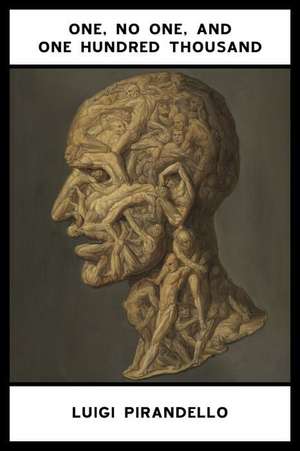One, No One, and One Hundred Thousand
Autor Luigi Pirandello Traducere de William Weaveren Limba Engleză Paperback – 21 oct 2018
| Toate formatele și edițiile | Preț | Express |
|---|---|---|
| Paperback (1) | 88.60 lei 6-8 săpt. | |
| Quick Time Press – 3 feb 2020 | 88.60 lei 6-8 săpt. | |
| Hardback (1) | 165.81 lei 6-8 săpt. | |
| Quick Time Press – 2 feb 2020 | 165.81 lei 6-8 săpt. |
Preț: 154.52 lei
Nou
29.57€ • 30.87$ • 24.47£
Cartea se retipărește
Specificații
ISBN-10: 194367907X
Pagini: 218
Dimensiuni: 128 x 190 x 15 mm
Greutate: 0.18 kg
Editura: SPURL ED
Descriere
Fiction. Translated from the Italian by William Weaver. Luigi Pirandello's extraordinary final novel begins when Vitangelo Moscarda's wife remarks that Vitangelo's nose tilts to the right. This commonplace interaction spurs the novel's unemployed, wealthy narrator to examine himself, the way he perceives others, and the ways that others perceive him. At first he only notices small differences in how he sees himself and how others do; but his self-examination quickly becomes relentless, dizzying, leading to often darkly comic results as Vitangelo decides that he must demolish that version of himself that others see.
Pirandello said of his 1926 novel that it "deals with the disintegration of the personality. It arrives at the most extreme conclusions, the farthest consequences." Indeed, its unnerving humor and existential dissection of modern identity find counterparts in Samuel Beckett's Molloy trilogy and the works of Thomas Bernhard and Vladimir Nabokov.
